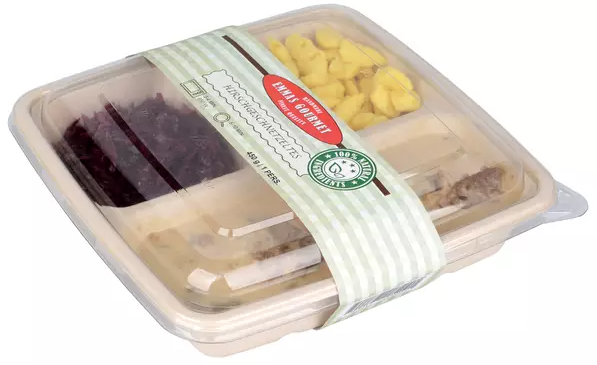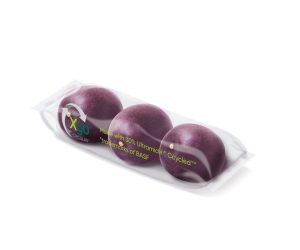

The food market is undergoing drastic changes. Consumers are becoming more conscious and are demanding locally produced food, food that is individually tailored to their needs and alternatives to conventional meat products. This places new demands on packaging.
Flexitarians, meat substitutes and the wrong packaging
Numerous start-ups and established food manufacturers compete with vegetable meat replacement products and in-vitro meat for the favor of consumers who want to eat less or no meat at all. No wonder: According to a Forsa study, more than half of all Germans no longer eat meat on three or more days per week. According to statistics from the U.S. Department of Agriculture, meat consumption in the USA is declining. More and more people want to eat more sustainably, ecologically, healthy and respectful. Flexitarians do not give up meat consumption completely, but do it less and more consciously. In order for these innovative new products to find their way to the buyers, the packaging must also fit: it should not only attract the consumers’ attention, but also, after closer inspection, encourage them to buy the product. Consumers see the product and the packaging as a unit. A high-quality, sustainably produced and healthy product is wrongly stored in cheap, impractical or obviously environmentally harmful packaging. Depending on the product, modified atmosphere trays (MAP packaging), skin packaging or shrink bags used as primary packaging, ensure a longer shelf life and therefore less foodwaste. Thinner and thinner, but often conventional plastics are used as packaging material. Equivalent alternatives here would be films made from renewable raw materials such as corn or sugar beets: which are, according to a recently published study on MAP packaging by Management Center Innsbruck (MCI), just as effective as conventional films. However, for the packaging material used – whether conventional or bio-based – to return to the intended cycle, two things are needed above all: well-informed customers (e.g. through clear communication on the packaging) and a combination packaging that can easily be broken down into its individual parts (e.g. the skin film made of polypropylene and the banderole made of paper).
Knowing where the meat and beans come from
One in five Swiss farms operated a farm store in 2019. In 2009 it only was one in eight. Producers of fruit, vegetables or meat are starting to set up delivery services – increasingly often in collaboration with other farmers to expand the product range and optimize deliveries. The corona situation is also providing an additional and probably sustainable boost here. A professionalization and transformation of the farm stores is taking place. Retailers are also jumping on the train and offer their customers more and more locally produced food: Consumers want to know which farmer the apples on offer come from and how far their journey from the tree to the store shelf was. Consumers who base their purchasing decisions on where and how food is produced, generally also pay attention to the environmental compatibility of the packaging. At the same time, as producers become more professional and open up new business models, the requirements for hygiene, shelf life and declaration of food products are also increasing. Simply unpacked is no longer an option. For many types of fruit and vegetables, environmentally friendly, unprinted trays made of cardboard, grass paper or recycled PET (rPET) are an option. Flexible, printed and variable paper band widths take over the branding and ensure that the products remain in the trays. New technologies such as coating fruit and vegetables with a protective vegetable cover from Apeel Sciences to extend their shelf life or applying logos and other information with a laser can also make sense for certain products – they help ensure that no packaging is needed at all.
Individualized food, individualized packaging
Customers of MunchFit from London decide on a meal plan adapted to their personal needs and receive the finished meals delivered to their home. Currently the selection consists of four different lines with daily changing menus. The specialist for fitness nutrition already produces hundreds of thousands of meals per year and wants to grow and individualize further. The environmental compatibility of the packaging certaintly plays a major role here too. But the packaging must be something else: scalable. MunchFit is representing hundreds of companies, large and small, which are producing more and more food products that are individually tailored to the needs of their customers. Flexible packaging that grows with new ideas is a decisive factor for success. Combination packaging offers just that: Depending on the product, different sizes of unprinted trays made of different materials such as sugar cane (bagasse) or rPET are used as primary packaging. Individually printed bands made of paper or film take on several rolls at once: They provide branding, inform consumers about composition and shelf life, and keep the trays tightly closed. Since banderoles do not require glue, they can be easily opened by hand, separated from the rest of the packaging and disposed of or recycled.
For more information, go to https://www.ats-tanner.com/en/news-and-applications/sustainable-and-flexible-packaging-for-food-trends-2471





